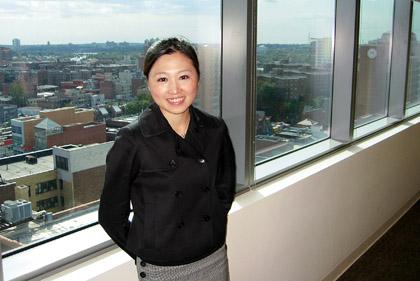By Connor Adams Sheets
The first full season of baseball at Citi Field has drawn to a close and the Mets did not manage to bring the pennant back to Queens. But the magnitude of other benefits and costs the stadium has brought to the area is beginning to be measured and experts, forecasters and local business owners have mixed impressions of its economic impact so far on neighboring Flushing.
The city, state and federal governments made major investments in the ballpark, which replaced the aging Shea Stadium, in part on the premise that it would spur economic activity in the surrounding area.
But so far the snazzy new stadium has not attracted many more customers to the neighboring downtown Flushing business district, according to Fred Fu, former president of the Flushing Chinese Business Association and current president of the Flushing Development Center.
“It’s the same as before. People who spend three hours at the game will not spend more time downtown,” he said. “Citi Field, compared with Shea Stadium, has a lot of dining options and vendors. So people have food while they are inside Citi Field. It’s a tradition to get a hot dog and a beer or a Coke or other food, and so they never think about coming to downtown Flushing.”
A January analysis by the city Independent Budget Office outlined the expected fiscal costs and benefits of the plan for financing the $800 million project, predicting the stadium would cost the city $138.1 million, the state $96 million and the federal government $137.4 million through tax-exempt financing, infrastructure contributions and foregone parking revenue. It calculated that the Mets organization would save $513 million through these and other public sources.
A preliminary IBO cost-benefit analysis released in April 2006 explained that these calculations would not reveal the full picture of the stadium’s economic impact.
“However, these costs should not be viewed as the total fiscal impact for the city of the stadium project; such an estimate would also include the impact on city revenues of any additional economic activity associated with the new facility,” the analysis said.
But even three years before the stadium opened, the 2006 IBO report predicted only modest increases in local revenue that would be far outpaced by losses, yielding “a net negative” for the city.
“There is little reason to expect a large gain in local economic activity beyond the three-year construction period since most of the spending at the new stadium will directly replace spending that would have occurred at the existing stadium,” the 2006 report said.
Conversely, a January 2009 analysis released by the city Industrial Development Authority predicted the city would collect $108 million “in taxes on direct and indirect activity from construction and operations,” and that the stadium would produce a net benefit to the city of more than $70 million.
And Dave Howard, executive vice president for business operations for the Mets, predicted in February 2007 that the stadium would bring $125 million to the state and $126 million to the city over 37 years.
These paper forecasts offer three different predictions, but local business owners have witnessed the effects firsthand when tallying their books at night.
The stadium has been a boom for F&T Group, an international real estate firm headquartered in the new Queens Crossing building in downtown Flushing that does cross-marketing with the stadium, according to Linda Liu, assistant manager of e888 International, one of the group’s operating companies.
“I believe, yes, that when people take the train, they can see the new stadium and that brings a lot of people,” she said. “When people take the train to Citi Field, they also come to Flushing and also Queens Crossing. Citi Field is positive.”
But Ed Staniszewski, general manager of the Sheraton LaGuardia East Hotel in downtown Flushing, said he has not witnessed a large boost to business since Opening Day 2009.
“Prior to that we already had Shea. Citi Field being built brought an incremental increase. Did it have a large impact? I would have to say, based on my information, no, because we already had a large base of people coming to games,” he said. “The economic development in Flushing was spearheaded well before it came on board.”
But he also said the economic downturn throws a wrench into such calculations.
“It’s very hard to tell if there was an uptick because of Citi Field because the whole economy went down,” he said.
David Lombino, a spokesman for the city Economic Development Corp., predictrf that over its first 30 years Citi Field would generate a net benefit of $57 million for the city.
“We think that together with Willets Point and Shea and our plan for downtown Flushing, that over the coming years you’ll be able to see an effect from the city’s economic development efforts,” he said. “It’s a long-term plan for the area. Citi Field is one part of a larger plan for Flushing, Willets Point and Corona.”
Fu says he hopes Flushing can seize on the opportunity to attract more people.
“Flushing and Citi Field are two destinations, one plus one,” he said. “Flushing is a bonus, extra credit.
Reach reporter Connor Adams Sheets by e-mail at csheets@cnglocal.com or by phone at 718-229-0300, Ext. 138.


































